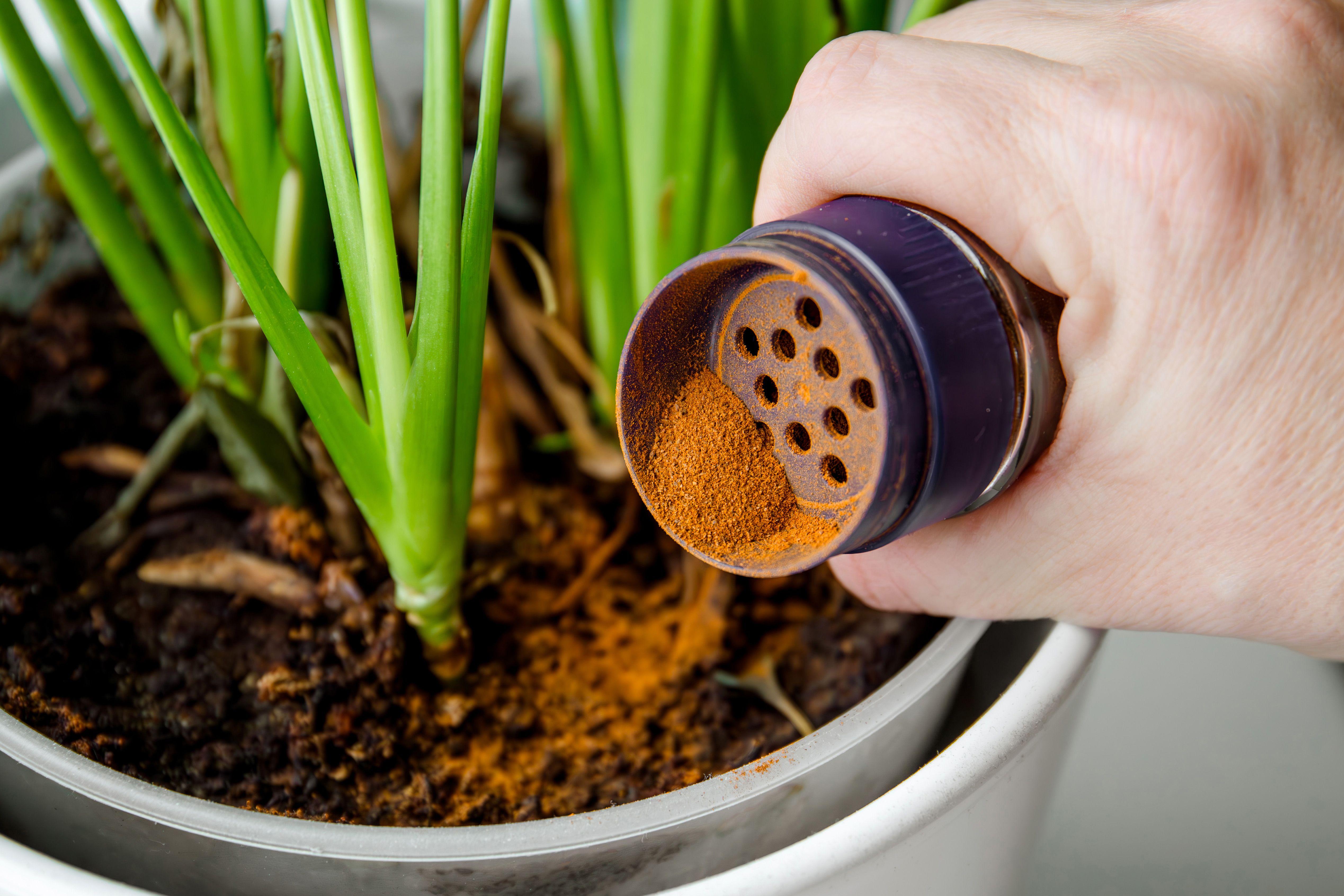Gardeners sometimes tout cinnamon as a repellent for pests and a remedy for plant diseases. Is this common household spice really an effective tool in the garden, or is this just influencer hokum? We asked an expert and checked scientific studies for evidence. Here’s what we found.
Campbell Vaughn is an Agriculture and Natural Resources Agent with the University of Georgia.
A Little Bit About Cinnamon
Cinnamon comes from either the bark of the Ceylon cinnamon tree, or true cinnamon tree (Cassium verum), or the cassia cinnamon tree (Cinnamomum cassia). Both are evergreen trees native to the tropics. The bark is stripped off the trees, dried, and ground into the brown powder that ends up in your spice rack. That bark contains cinnamaldehyde and eugenol. This pair of chemicals:
- Defends the tree from animals that eat the bark and leaves by making the tree taste bad.
- Protects the tree from disease-causing fungi and bacteria.
- Repels and even kills insects that might damage the tree.
Cinnamaldehyde and eugenol are part of the tree’s natural defense system of chemicals that act as a sort of immune system for the tree by protecting it from environmental threats. Ground cinnamon contains the two chemicals that protect the tree, and that’s why it can also protect your garden plants.
Related
Cinnamon as Fungus Fighter
A 2021 study from Poland found that cinnamon oils and extracts have antifungal properties that can fight plant diseases like corn rot, fusarium wilt, early tomato blight, and gray mold that attacks fruits.
“I wouldn’t say it is a miracle fungicide, but it can help in specific circumstances, specifically gray mold, which is common in fruits like strawberries,” says Campbell Vaughn, an Agriculture and Natural Resources Agent with the University of Georgia. Cinnamon and its chemical compounds effectively hinder bacterial and fungal growth, the Polish study found.
Cinnamon powder can be used to propagate plants. It doesn't promote root growth, but its antifungal properties slow rot in cuttings and buy time for roots to sprout.
Cinnamon for Pest Control
According to the abovementioned study, cinnamon repels pests but won’t kill them. Cinnamon is used as an ingredient in mosquito repellents, usually in combination with other essential oils. Cinnamon oil has been shown to deter thrips, peach aphids, and some moths.
Cinnamon leaf oil “proved to be very effective as a killing agent for mosquito larvae,”according to one study. Cinnamon oil, which is made from the bark and leaves of cinnamon trees, has also been studied as a natural biopesticide.
How to Use Cinnamon in the Garden
Sprinkling cinnamon from your kitchen in the garden won’t repel bugs or fight fungi, Vaughn says. There isn’t enough cinnamaldehyde and eugenol, the active ingredients that battle pests and fungal diseases, in dried and powdered cinnamon to bother a bug or pathogenic fungus.
To use cinnamon in your garden, you’ll need to use essential oils. There are two ways to do this: Dilute cinnamon oil with water and spray it on plants, or buy commercially prepared fungicides and insect repellents that have cinnamon oil as an ingredient.
If you DIY it and mix up your own cinnamon oil and water solution, you'll need dilute it quite a bit. The abovementioned study recommends a ratio of 1 part cinnamon oil to 1,000 parts water to combat white mold.
Do a test spray on a leaf to make sure you haven’t put too much cinnamon oil in your home brew. If cinnamon oil is not diluted properly, it is harmful to plants. A little cinnamon oil goes a long, long way.



